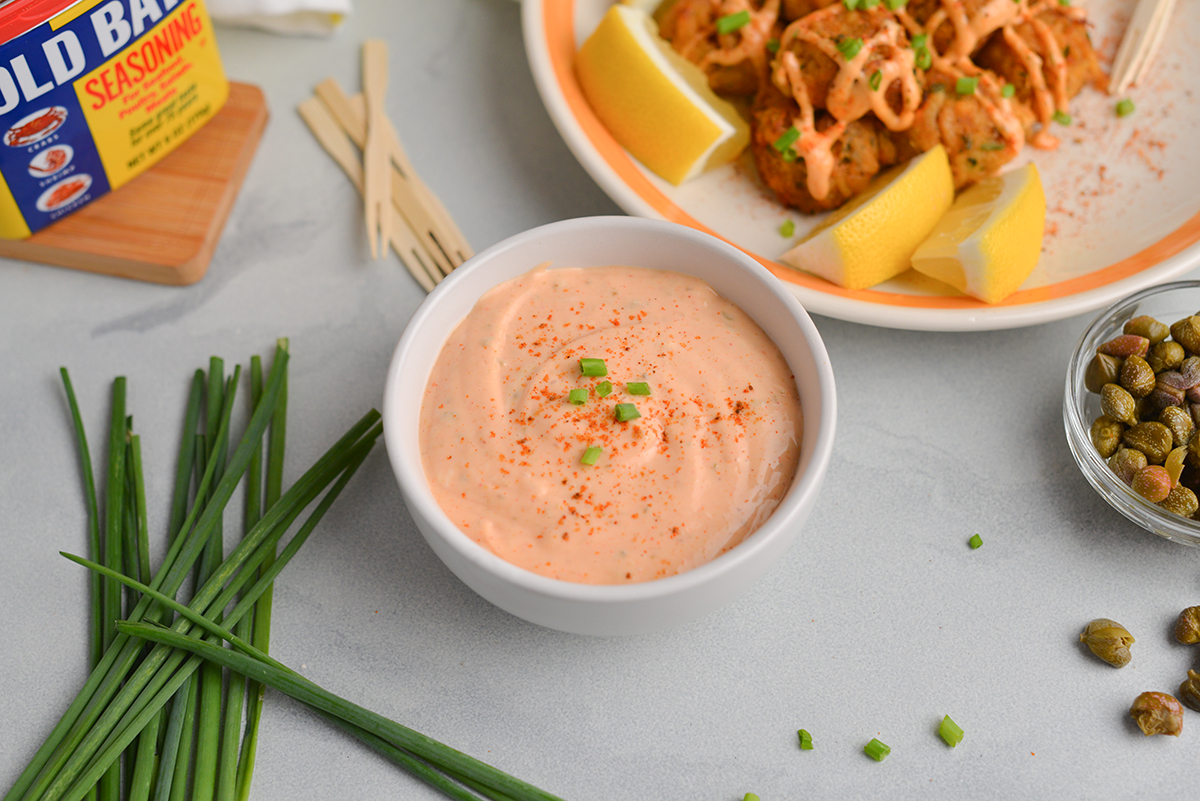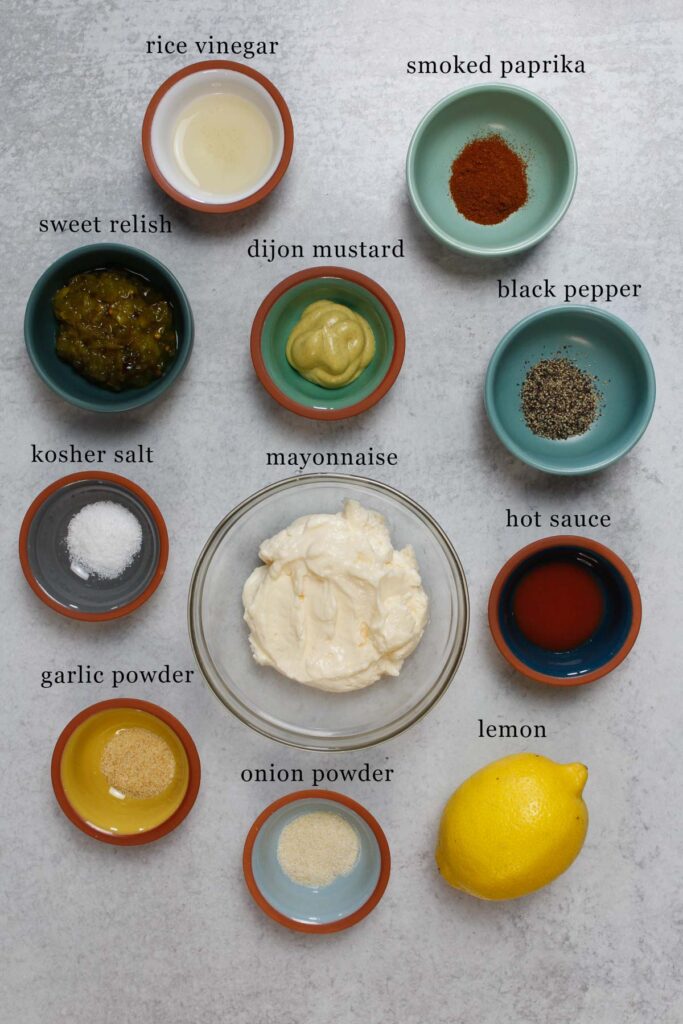Crab cake sauce is a creamy, tangy condiment that is commonly served with crab cakes and other seafood dishes. But what exactly goes into making this popular sauce? In this article, we’ll take an in-depth look at the origins, ingredients, and regional variations of crab cake sauce.
A Brief History of Crab Cake Sauce
Crab cakes originated in Maryland in the early 19th century as a way to stretch expensive crab meat The traditional sauce served with Maryland crab cakes was a simple mix of mayonnaise and mustard. As crab cakes became popular along the Atlantic coast and other parts of the U.S, regional variations of crab cake sauce emerged.
The basic ingredients in crab cake sauce are mayonnaise, mustard, and lemon juice. However, modern recipes also incorporate spices, herbs, hot sauce, Worcestershire sauce, and other ingredients to create unique flavor profiles. While crab cake sauce is still associated mainly with Maryland crab cakes, it’s now served with seafood dishes across the country.
The Role of Crab Cake Sauce
So why is crab cake sauce such an integral part of the crab cake experience? The sauce serves several purposes:
-
Adds moisture – Crab meat can be dry on its own, so the creamy sauce helps moisten each bite
-
Provides flavor – Crab meat is prized for its sweet, delicate flavor The sauce complements and enhances the natural taste of the crab.
-
Balances textures – Crab cakes are crispy on the outside but tender inside. The sauce adds contrasting creaminess.
-
Cuts richness – Crab meat can be rich. The tangy sauce helps cut through the richness with acidity.
-
Adds visual appeal – The vibrant sauce livens up the plating.
The sauce is truly the perfect partner for the crab cake!
Common Ingredients in Crab Cake Sauce
While recipes vary, these are some of the most popular ingredients used to make crab cake sauce:
-
Mayonnaise – The base of most crab cake sauces. It provides creaminess and richness.
-
Prepared mustard – Yellow mustard or Dijon lend tanginess.
-
Lemon juice – Adds freshness and acidity to balance the richness.
-
Worcestershire sauce – Provides savory umami flavor.
-
Hot sauce – Gives spice and heat to some variations.
-
Herbs – Chives, parsley, tarragon add fresh herbal notes.
-
Capers – Give a briny, pickled flavor.
-
Old Bay seasoning – The iconic Chesapeake Bay spice blend.
-
Paprika – For color and subtle smokiness.
-
Salt and pepper – Season to taste.
By adjusting these components, you can customize the sauce to suit your tastes.
Regional Variations
Crab cake sauce takes on different regional twists:
-
Maryland – Sticks close to the simple mayo-mustard original with Old Bay seasoning.
-
Louisiana – Uses Creole mustard and hot sauce for a spicy, peppery kick.
-
Tartar sauce – Some New England versions are basically homemade tartar sauce.
-
Remoulade – Tangy, herb-packed takes influenced by French Creole cooking.
-
Cocktail sauce – Similar to shrimp cocktail sauce with horseradish and ketchup.
-
Aioli – Gilroy and garlic flavor this West Coast rendition.
-
Tzatziki – Greek yogurt and cucumbers give a cool, creamy take.
There are endless ways to riff on crab cake sauce using local flavors.
How to Make Basic Crab Cake Sauce
Making your own crab cake sauce at home is easy. Here is a basic recipe to get you started:
Ingredients:
- 1 cup mayonnaise
- 1 tablespoon Dijon mustard
- 1 tablespoon lemon juice
- 1⁄2 teaspoon Worcestershire sauce
- 1⁄4 teaspoon Old Bay seasoning
- Salt and pepper to taste
Instructions:
-
In a small bowl, combine the mayonnaise, mustard, lemon juice, Worcestershire sauce, and Old Bay seasoning. Whisk until thoroughly blended.
-
Taste and season with salt and pepper as desired. For bolder flavor, add more mustard, Worcestershire, or Old Bay. For more acidity, add more lemon juice.
-
Transfer to a serving bowl or ramekins. Serve alongside hot crab cakes.
-
Store leftovers in the refrigerator for up to 4 days.
Feel free to experiment with different ingredient combinations until you find your perfect crab cake sauce!
Pairing Crab Cake Sauce with Other Dishes
While it’s purpose-made for crab cakes, crab cake sauce also pairs well with other seafood dishes like:
- Fried shrimp
- Fried oysters
- Crab imperial
- Lobster rolls
- Seared scallops
- Grilled fish fillets
- Steamed mussels or clams
- Oyster po’ boys
You can also use it as a dip for cooked shellfish like shrimp, crab claws, or lobster. The sauce adds moisture and flavor to any simply prepared seafood.
Crab Cake Sauce Storage Tips
To maximize freshness, store crab cake sauce:
-
In an airtight container in the refrigerator.
-
For up to 4 days.
-
With a layer of plastic wrap directly on the surface to prevent discoloration.
-
In a squeeze bottle for easier pouring and dipping.
-
In ice cube trays, frozen, then pop out cubes to thaw as needed.
With proper storage, you can enjoy freshly made taste without waste.
Should You Make or Buy Crab Cake Sauce?
Pros of making it:
- Control the flavor profile and spice level
- Avoid preservatives and stabilizers
- Less expensive per ounce
- Can use high-quality ingredients
Pros of buying pre-made:
- Saves prep time
- Convenient if you only need a small amount
- Lets you try different recipes easily
- Stores for longer in the refrigerator
So whether you choose to make or buy depends on your time, budget, and preferences! High-quality prepared sauces can be a good alternative when you don’t want the hassle of homemade.
Crab Cake Sauce Brings Out the Best in Seafood
A simple creamy sauce makes all the difference when it comes to enjoying tender crab cakes or other seafood dishes. Crab cake sauce adds flavor, moisture, and visual appeal. While modern versions have more complex ingredients, the origins lie in the basic mayonnaise-mustard blend created to perfectly complement crab. Regional variations throughout the U.S. put localized twists on the sauce. Experiment until you find your favorite crab cake sauce recipe, then use it to bring out the sweet succulence of fresh seafood.

Maryland Crab Cake Recipe FAQ’s
Remoulade sauce is almost always my first choice to pair with Maryland crab cakes. They also go great with tartar sauce. You can eat them as is, or wrap them in a bun with lettuce, tomatoes, and sauce of your choice to make a crab cake sandwich!
Maryland Crab Cake Ingredients

- Lump Crab Meat – These crab cakes are very abundant and heavy on the crab meat. That’s what makes them so special! You’ll need one pound of it.
- Mayonnaise – One of the binders that will hold these crab cakes together.
- Panko Bread Crumbs – Another binder, but we’re not using a lot of it since we don’t want too much filler. I only use ¼ cup per pound of crab meat.
For the rest of the ingredients, please see the recipe card below!

This remoulade sauce might honestly be my favorite crab cake sauce. It’s smoky from the addition of smoked paprika, and tangy with a hint of sweetness from the sweet relish. It’s an overall very well balanced sauce that compliments these Maryland crab cakes in the best way.
Quick and Delicious: Maryland Crab Cakes with Remoulade Sauce
FAQ
What is the sauce for crab cakes?
Remoulade Sauce: Whisk together the mayonnaise, ketchup, capers, relish, mustard and lemon juice in a medium bowl until well combined. Season with salt and pepper.
What is traditionally served with crab cakes?
Rice is also an excellent compliment, and helps fill out the plate. In addition to the starch, you can also serve a crisp side salad with a light dressing. Other greens include string beans and broccoli, along with spinach. If it’s in season, corn is the traditional follow up to a crabcake dinner.
What sauce is good with crab cakes Southern Living?
Remoulade sauce is perfect with French fries, po’boys and other sandwiches, and all kinds of seafood: boiled shrimp, fried fish, and crab cakes. You’ll also find remoulade served with fried green tomatoes, corn fritters, and zucchini or squash fritters.
What are the ingredients in remoulade sauce?
Remoulade sauce typically includes a mayonnaise base, mustard (often Creole or Dijon), lemon juice, and various flavorings like herbs, pickles, and spices.
